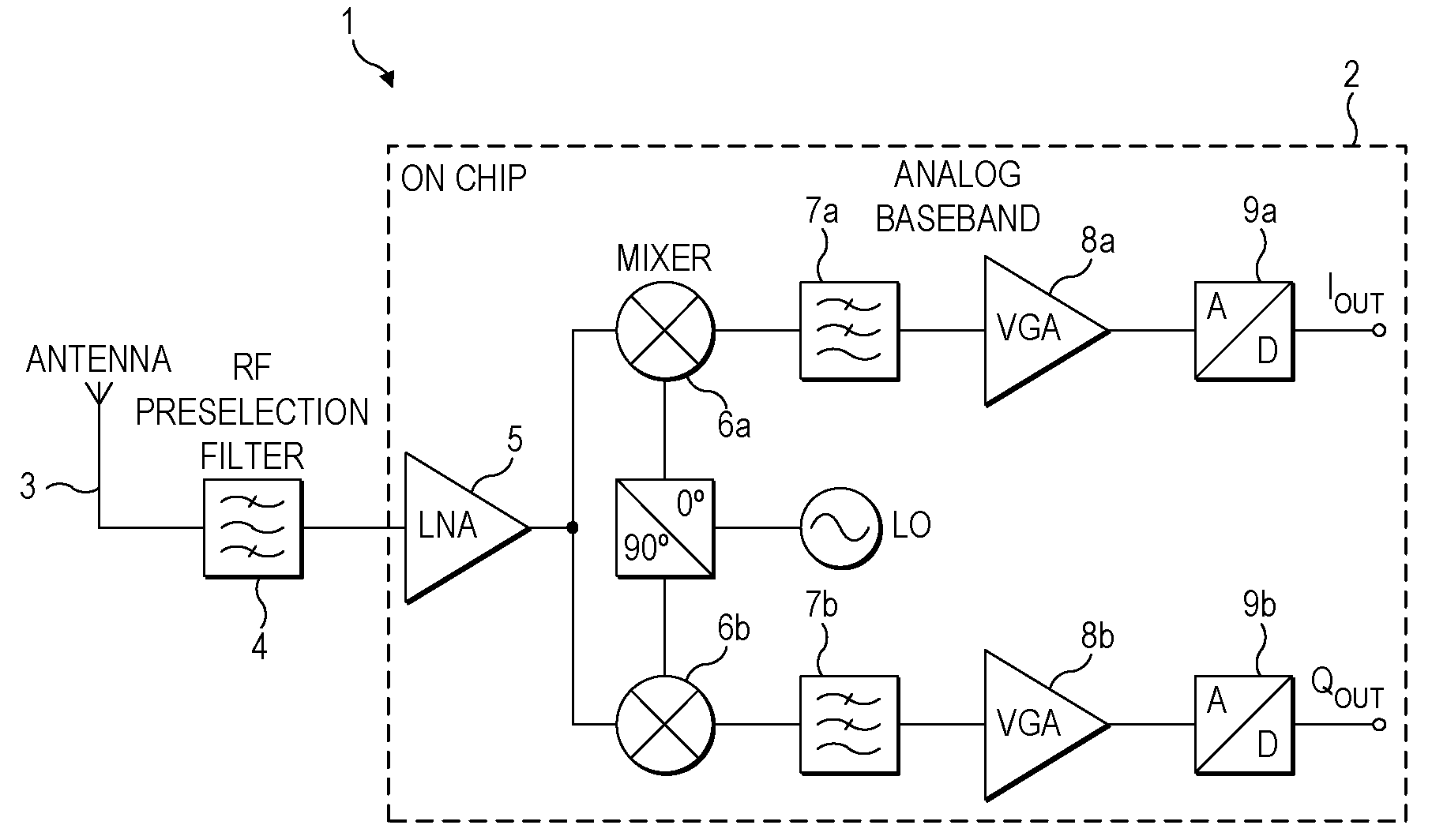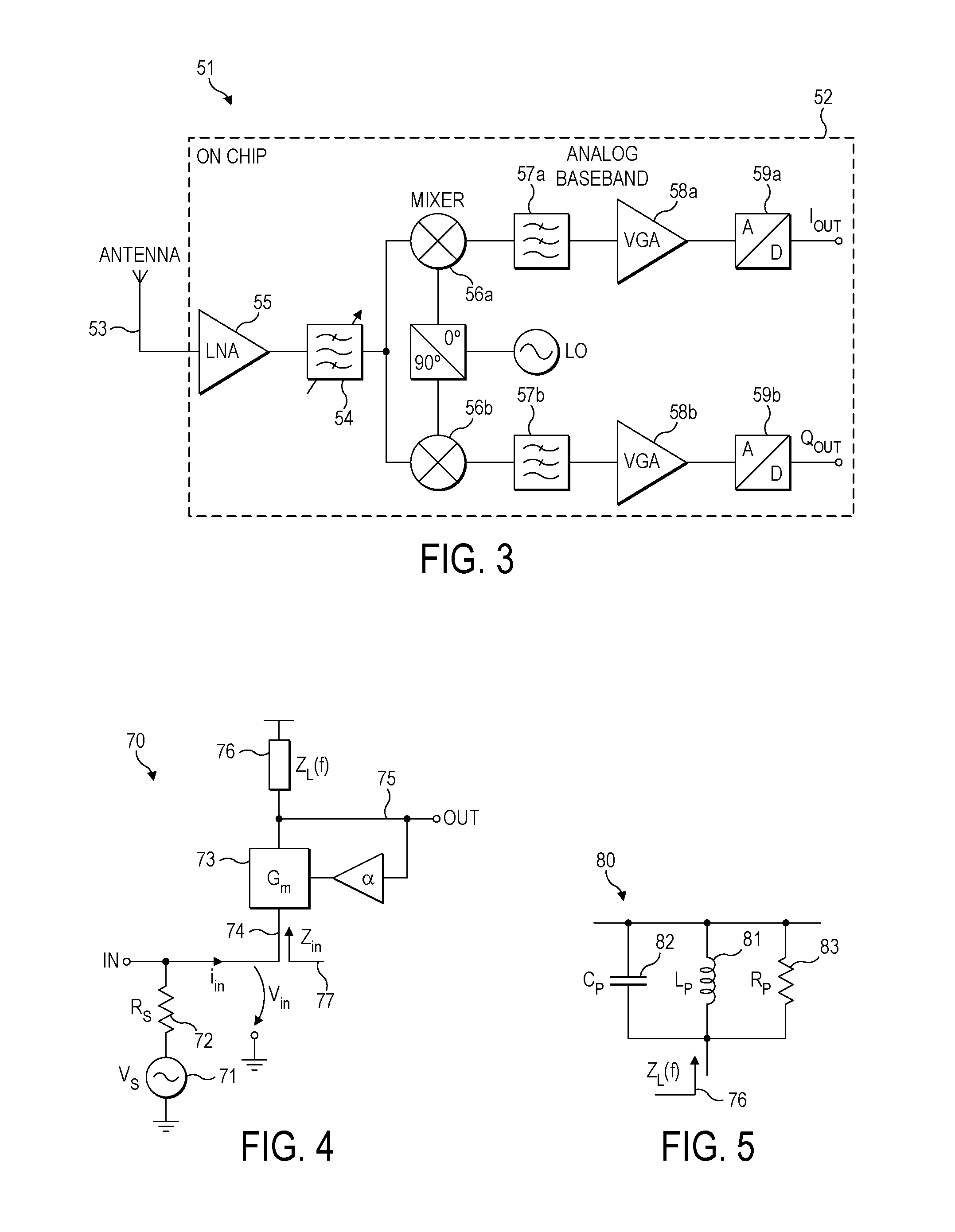Amplifier with On-Chip Filter
a technology of filter and amplifier, applied in the direction of electrical equipment, transmission, network with variable switch closing time, etc., can solve the problems of increasing the cost and complexity of baluns, increasing the cost of radio receivers, and the inability of pre-selection filters to be integrated on silicon
- Summary
- Abstract
- Description
- Claims
- Application Information
AI Technical Summary
Problems solved by technology
Method used
Image
Examples
Embodiment Construction
[0028]FIG. 1 is a block diagram of a single-band zero-IF receiver architecture. In the receiver 1 illustrated in FIG. 1, the antenna 3 feeds the received RF signal to an RF band-pass filter 4 (pre-selection filter) that performs the pre-selection of the received RF band. The LNA 5, which is usually the first integrated block of the receiver IC 2, amplifies the RF signal in order to reduce the noise contributions of the following stages. I and Q down-conversion mixers 6a, 6b convert the signal to analog baseband. The down-converted signals are filtered by respective low-pass filters 7a, 7b output to respective variable gain stages 8a, 8b. Finally, respective analog-to-digital converters (ADC) 9a, 9b convert the analog signal from the respective gain stages 8a, 8b to a digital form.
[0029]FIG. 2 is a block diagram of a zero-IF receiver architecture for a multi-mode or multi-standard application requiring several external RF filters. In the receiver 31 illustrated in FIG. 2, three anten...
PUM
 Login to View More
Login to View More Abstract
Description
Claims
Application Information
 Login to View More
Login to View More - R&D
- Intellectual Property
- Life Sciences
- Materials
- Tech Scout
- Unparalleled Data Quality
- Higher Quality Content
- 60% Fewer Hallucinations
Browse by: Latest US Patents, China's latest patents, Technical Efficacy Thesaurus, Application Domain, Technology Topic, Popular Technical Reports.
© 2025 PatSnap. All rights reserved.Legal|Privacy policy|Modern Slavery Act Transparency Statement|Sitemap|About US| Contact US: help@patsnap.com



